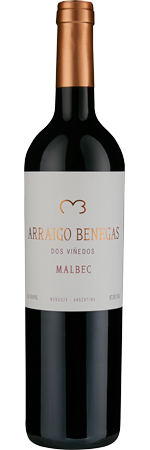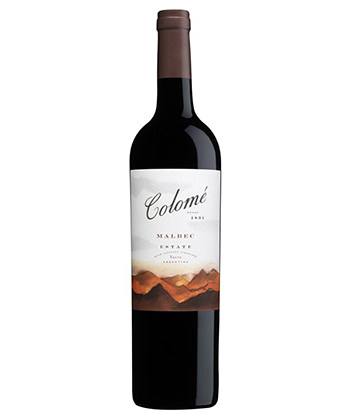Who isn’t partial to a glass of wine? It’s my tipple of choice and I’m fascinated by the history and processes of winemaking; it’s a journey on which there is always more to learn.
That’s one of the reasons I love being a member of the Central London Wine Society (CLWS), through which I have made many good friends. Every time I attend a CLWS tasting I learn something new – and tonight was no exception.
Hosted by Ian McClaren, this tasting was focused on Argentinian wines: a joyful experience for a lover of New World wines like me. What, though, would you expect from an Argentinian tasting? I had in mind Torrontes and Malbec – and these did, indeed, feature – but I was pleased to find that we would be exploring other grapes, too.
As always, we began the evening with white wines and first up was a Torrontes hailing from the La Rioja Co-Operative, going by the name of ‘Tillimuqui’. A pale yellow colour, I was interested to learn it had been fermented in stainless steel, but was disappointed by an excess of acidity. “Sharp” is what I wrote in my notes and how I will remember this wine.
Luca Valaretti’s Mendozan Viognier, on the other hand, was a whole other story. Its clear, pale, yellow colour offered little indication of the delights in store: whilst it revealed little fruit, I loved this dry but refreshing wine.

The less said about the Mendozan Chardonnay, however, the better. An attractive golden colour it may have been – and fermented in both old and new French oak – but this wine from Ernesto Bajda was not for me.
On to the reds, and I thoroughly enjoyed the 2014 Cabernet Sauvignon ‘Piattelli’ made by Antonia Vandolin in the South province. An attractive berry red, it showed those cabbagey tones you might expect on the nose, while producing the slight steeliness familiar to CS lovers. I expected (and found) little fruit in this wine, but that didn’t stop me awarding it 5/7.
Ditto the 2015 Norton Ofrenda, of which I had zero expectations, knowing zero of the winemaker. I loved this blend of Malbec, Merlot and Cab Sauvignon, which was made by Jorge Riccitelli and spent 12 months in 50% new French oak. Norton is a large producer, with five vineyards along the length of Mendoza, home of vines up to 80 years old; the Ofrendra (“Offering”) was made in Luyan de Cuyo, at 1,100m.
Good as it was, it was outclassed by the following two wines. The 2011 Arraigo Benegas, an equal blend of Cab Sav (planted in 1935), Merlot and Cabernet Franc, hails from a vineyard founded in Luyan de Cuyo in 1935 and run by Frederico Benegas Lynch. Aged in French oak, this wine offered a jammy nose, lots of fruit and a lingering heat.

The 2013 Clos de los Siete, from Vista Flores in the Uco Valley, was the wine that many of my fellow tasters had come for. Luckily, they weren’t disappointed, although a number did comment that it wasn’t quite as special as they’d expected. Personally, I was drawn in by its soft berry nose and the whiff of tobacco that arrived shortly after. To taste, this Malbec blend was smooth and enjoyable – and very different from the previous reds. I liked it almost, but not quite as much, as the Arraigo Benegas and it was the overall favourite of the night.
I’ll gloss over the 2016 Luigi Bosca Vistalba Malbec from Mendoza, which I found harsh and unappealing, and move on to my own favourite, the 2015 Colomé Estate Malbec. Hailing from Valle Calchaqui, in Salta (home to the highest vineyards in the world), I was won over by this wine’s purple hues, soft fruit and winning finish. “My kind of Malbec”, I’ve written in my notes – and I think that sums it up nicely.

Sadly, the final wine of the night was also the most disappointing. This 2012 Vinalba Cuvee Divine, featuring 85% Malbec and 15% Cabernet Franc from 60 year-old vines and given 16 months in French oak, was unattractively sharp. Admittedly, it may have suffered from the fact that I was eating dessert at the same time, but I could find nothing in it to justify its £40 price tag – especially considering that the other wines were priced between £9.50 and £26.
That notwithstanding, this was a thoroughly enjoyable evening featuring some delicious wines from a great selection of winemakers. Argentinian wines continue to surprise, inform – and intrigue.
I’m not a wine expert at all but it seems strange when I was young from recollection the best wines were French, now everything is New World. I seem to remember seeing a program on the television which suggested the French had not modernised as quickly as other countries. I’m probably better off with my lager or a Bombay Gin and Tonic!
LikeLiked by 1 person
I would add, also, that French wines tend to be a lot more expensive than their New World counterparts. When there are such good NW wines available for less than £10 per bottle in our local supermarkets, most of us will opt for those and save French wine for “special occasions”.
LikeLiked by 1 person
Yes indeed we buy wine for dinners at home and always buy new world.
LikeLiked by 1 person
I like Alamos wines, but never tried the Viognier you have pictured. I found I really got into Carmenere. From VinePair site: Carménère is to Chile as Malbec is to Argentina. It’s a grape that was born in France, but never truly found its place there, instead finding fame and fortune in the climate of a South American country.
LikeLiked by 2 people
Isn’t that interesting? I would never have associated Carménère with France; have always thought of it as a New World grape – but then, that’s the beauty of learning about wine. Thank you for sharing 🙂
LikeLiked by 1 person